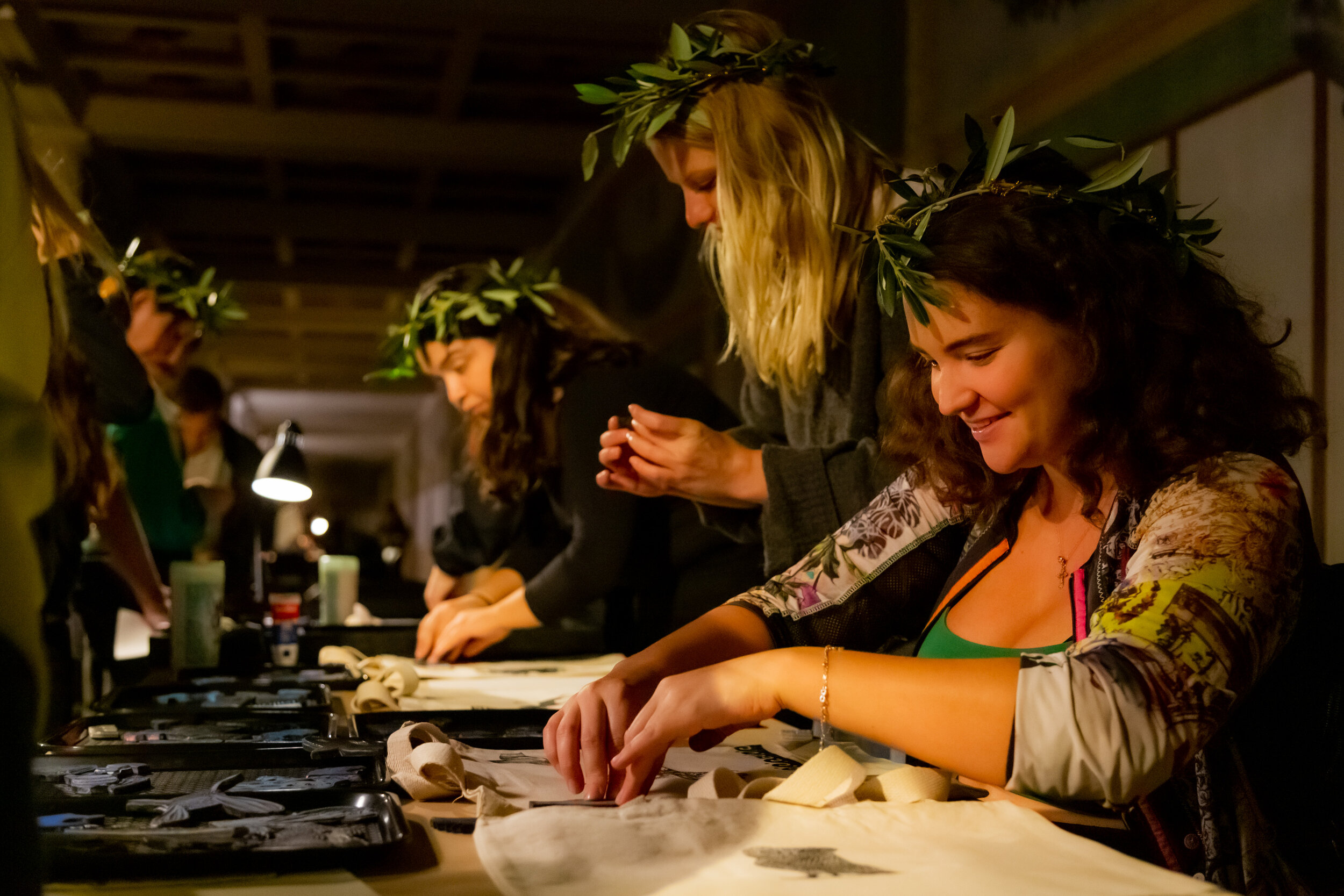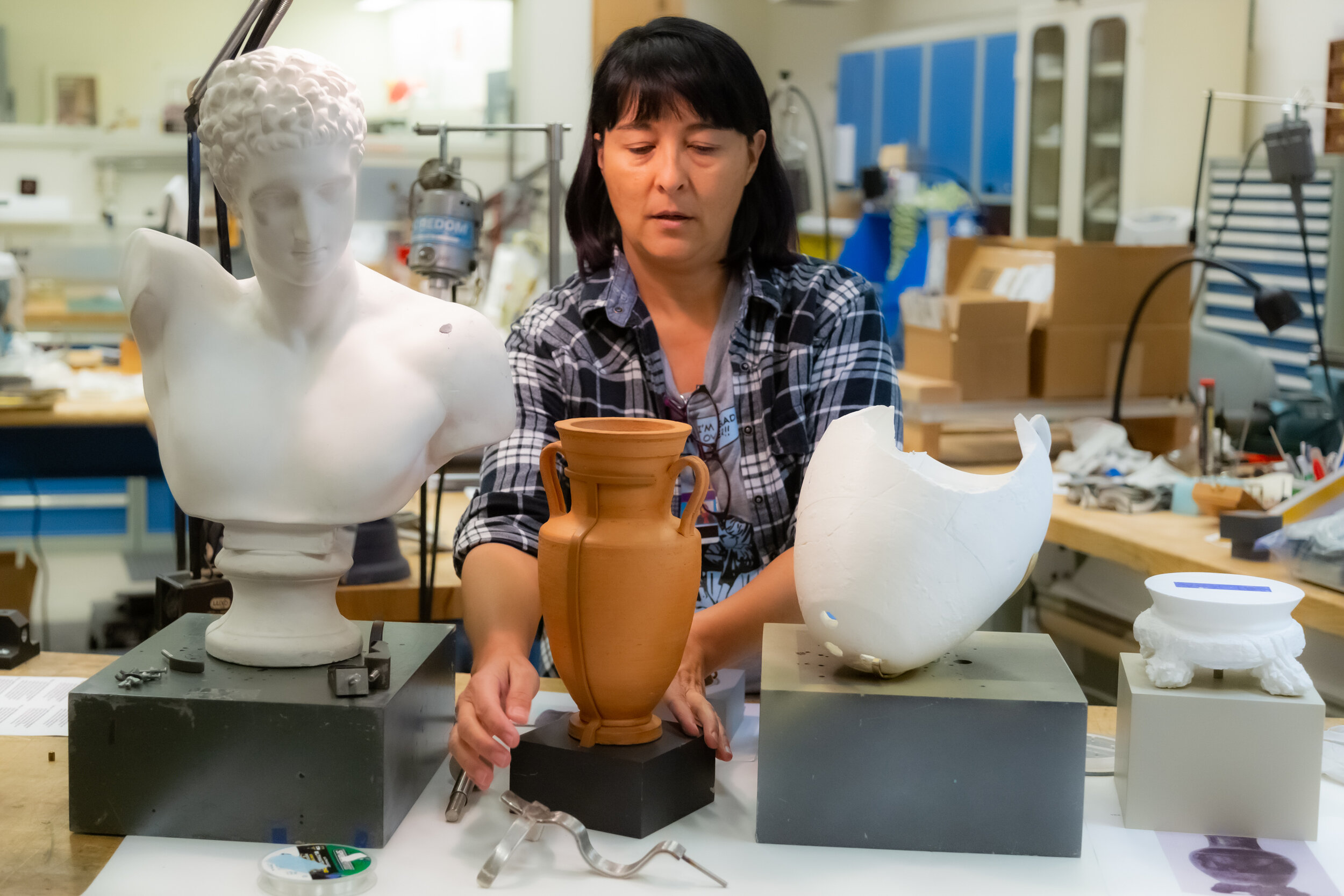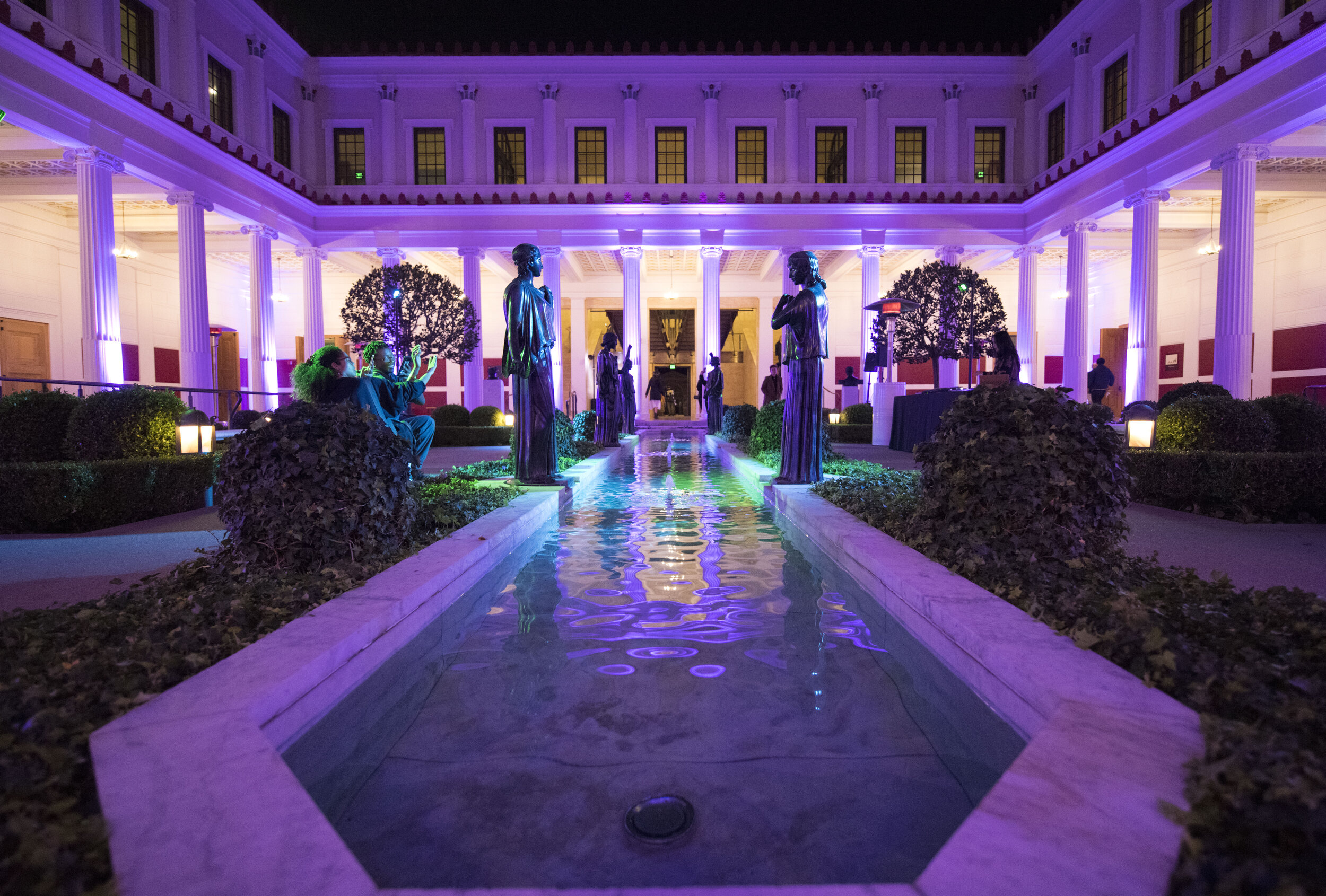A Look Back in Time at Getty College Night
On Tuesday, Nov. 14, the Getty Villa in Pacific Palisades, Cal. hosted an evening of activities and entertainment for students from colleges all over Los Angeles. As an added enticement, free food – first come, first serve – was offered, and many students indulged.
On leaving the parking structure, the magnificence of the Villa reveals itself, and if the building is beautiful in daylight, at night it is positively enchanting. The museum has installed lighting that enhances the splendor of the architecture and gardens, and it makes an evening visit almost magical.
The food court was conveniently close to the parking structure's exit at the top of the amphitheater, above the main plaza in front of the villa entrance. The food options included chicken and vegetarian burritos, and cookies were also on hand for those with a sweet tooth.
At the bottom of the amphitheater's steps were a number of attractions, including a photo booth and a replica chariot. There were also soldiers wearing Roman armor, as well as armor available for visitors to try on. Santa Monica College (SMC) student Marianne Roernes, originally from Tromso, Norway, bravely suited up, but seemed quite happy to take off the armor after posing for a few photos with the soldiers.
The Getty Villa had encouraged students to wear a toga or stola (a Roman gown) to the event, and a number of the attendees went along with the theme. All the period clothing looked stylish, and enhanced the ambiance of the event.
Known as the outer peristyle, the Villa has an area with a long reflecting pool, attendant flower beds, and fruit trees. The pool was decorated with floating, illuminated colored lights, which produced a festive feeling.
In the colonnades on either side of the pool were tables set up for students to try ancient crafts. At one, students could weave their own laurel wreaths. This was one of the more popular stops as it seemed most of the students walking around the villa were wearing newly woven wreaths.
Another table hosted an art-making station, where students could imprint bags with animal designs from inked stamps. The most bizarre sight was a booth with a fake sheep's liver, and a "fortune-teller" demonstrating a divination method known as hieromancy, where the organ is inspected in order to predict the future.
Organized tours of various exhibitions were available, including the current "Assyria: Palace Art of Ancient Iraq" show. The guide handed out to students also advertised a tour titled "The Secret Life of Art," where students could "learn what happens before the art gets to the gallery".
A conservator first showed how supports for exhibits were custom made, and then demonstrated an earthquake simulator. An 18 inches tall replica of Michelangelo's David statue was placed on an isolated platform on the simulator, and then an earthquake simulation was run; little of the motion was transferred to the statue. However, when the simulation was repeated with the isolator uncoupled, the statue reacted violently, and only a wire and hook connected to a metal loop coming out of David's cranium prevented the statue from taking a spill.
Altogether, the Getty did a fine job of entertaining the students with a combination of interesting and fun activities. And free food.





